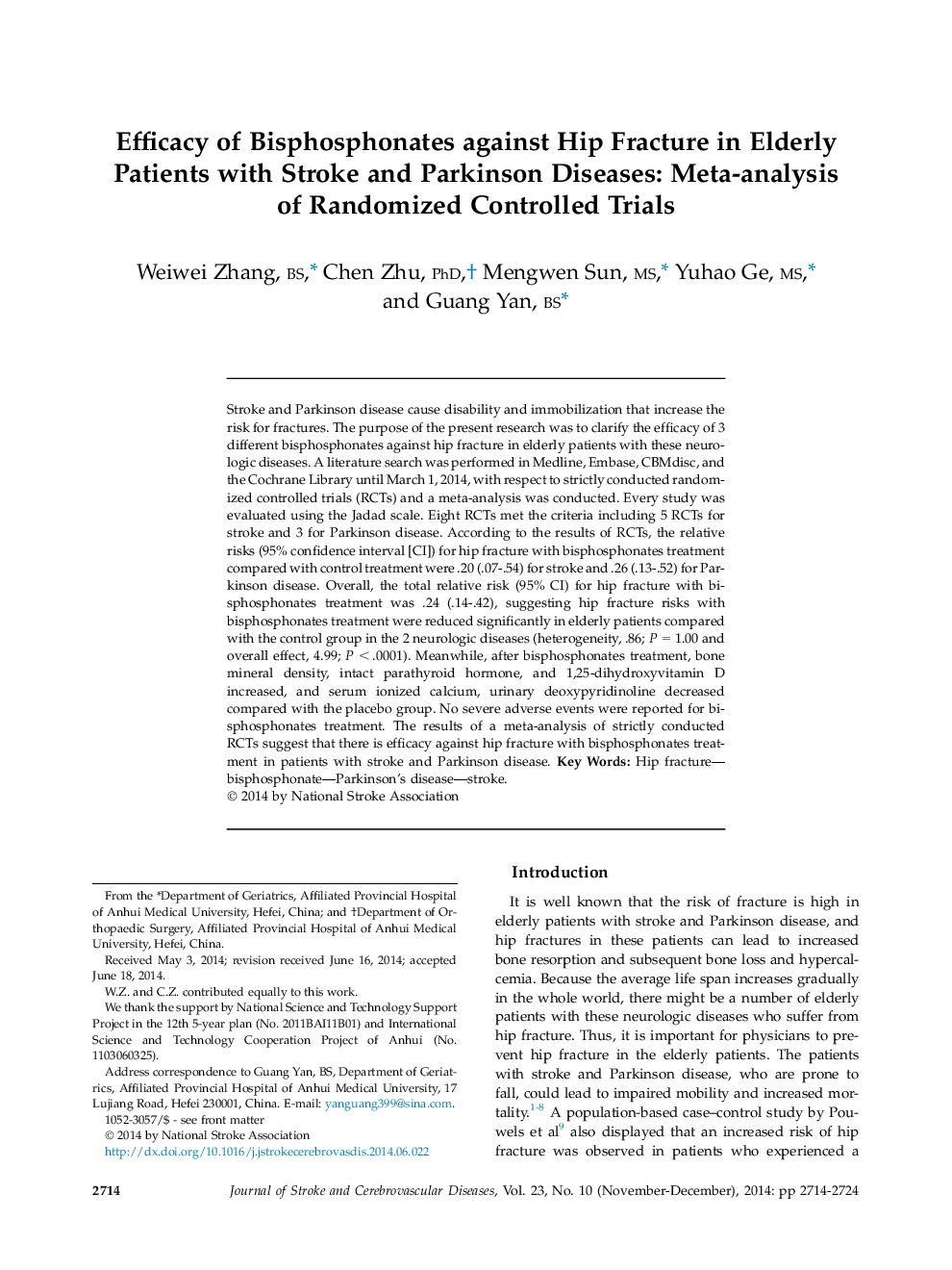| Article ID | Journal | Published Year | Pages | File Type |
|---|---|---|---|---|
| 5874069 | Journal of Stroke and Cerebrovascular Diseases | 2014 | 11 Pages |
Abstract
Stroke and Parkinson disease cause disability and immobilization that increase the risk for fractures. The purpose of the present research was to clarify the efficacy of 3 different bisphosphonates against hip fracture in elderly patients with these neurologic diseases. A literature search was performed in Medline, Embase, CBMdisc, and the Cochrane Library until March 1, 2014, with respect to strictly conducted randomized controlled trials (RCTs) and a meta-analysis was conducted. Every study was evaluated using the Jadad scale. Eight RCTs met the criteria including 5 RCTs for stroke and 3 for Parkinson disease. According to the results of RCTs, the relative risks (95% confidence interval [CI]) for hip fracture with bisphosphonates treatment compared with control treatment were .20 (.07-.54) for stroke and .26 (.13-.52) for Parkinson disease. Overall, the total relative risk (95% CI) for hip fracture with bisphosphonates treatment was .24 (.14-.42), suggesting hip fracture risks with bisphosphonates treatment were reduced significantly in elderly patients compared with the control group in the 2 neurologic diseases (heterogeneity, .86; P = 1.00 and overall effect, 4.99; P < .0001). Meanwhile, after bisphosphonates treatment, bone mineral density, intact parathyroid hormone, and 1,25-dihydroxyvitamin D increased, and serum ionized calcium, urinary deoxypyridinoline decreased compared with the placebo group. No severe adverse events were reported for bisphosphonates treatment. The results of a meta-analysis of strictly conducted RCTs suggest that there is efficacy against hip fracture with bisphosphonates treatment in patients with stroke and Parkinson disease.
Related Topics
Health Sciences
Medicine and Dentistry
Clinical Neurology
Authors
Weiwei BS, Chen PhD, Mengwen MS, Yuhao MS, Guang BS,
